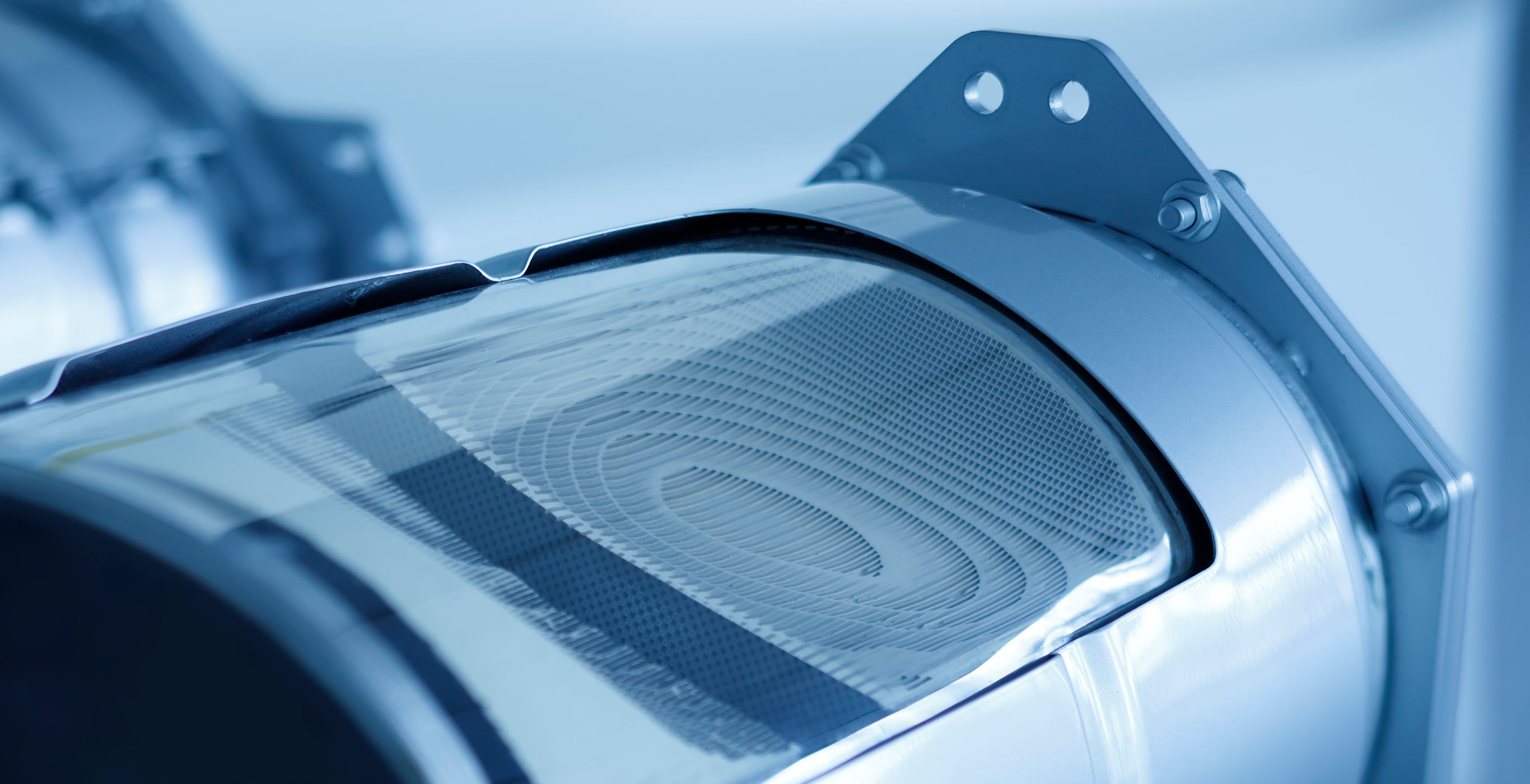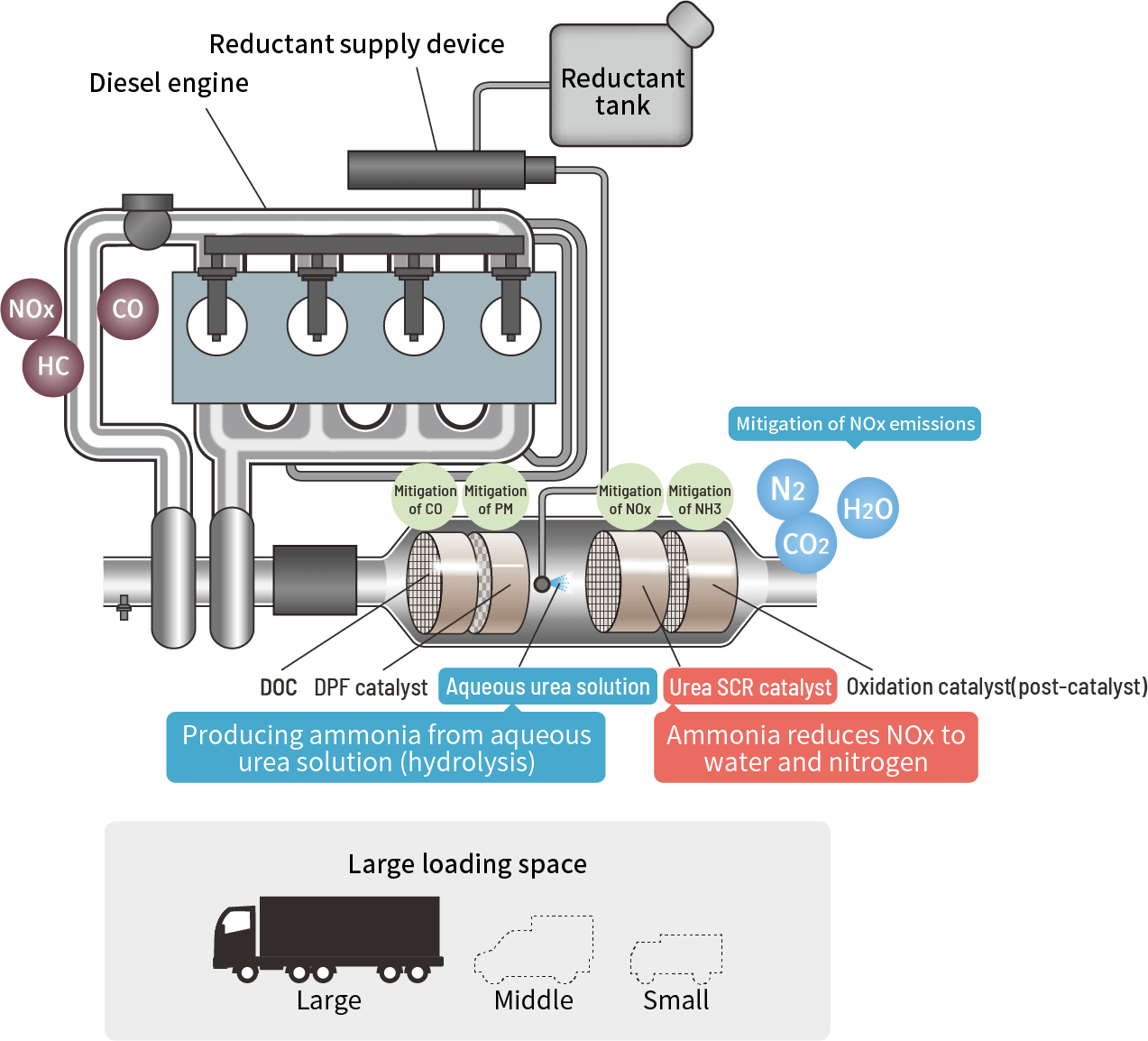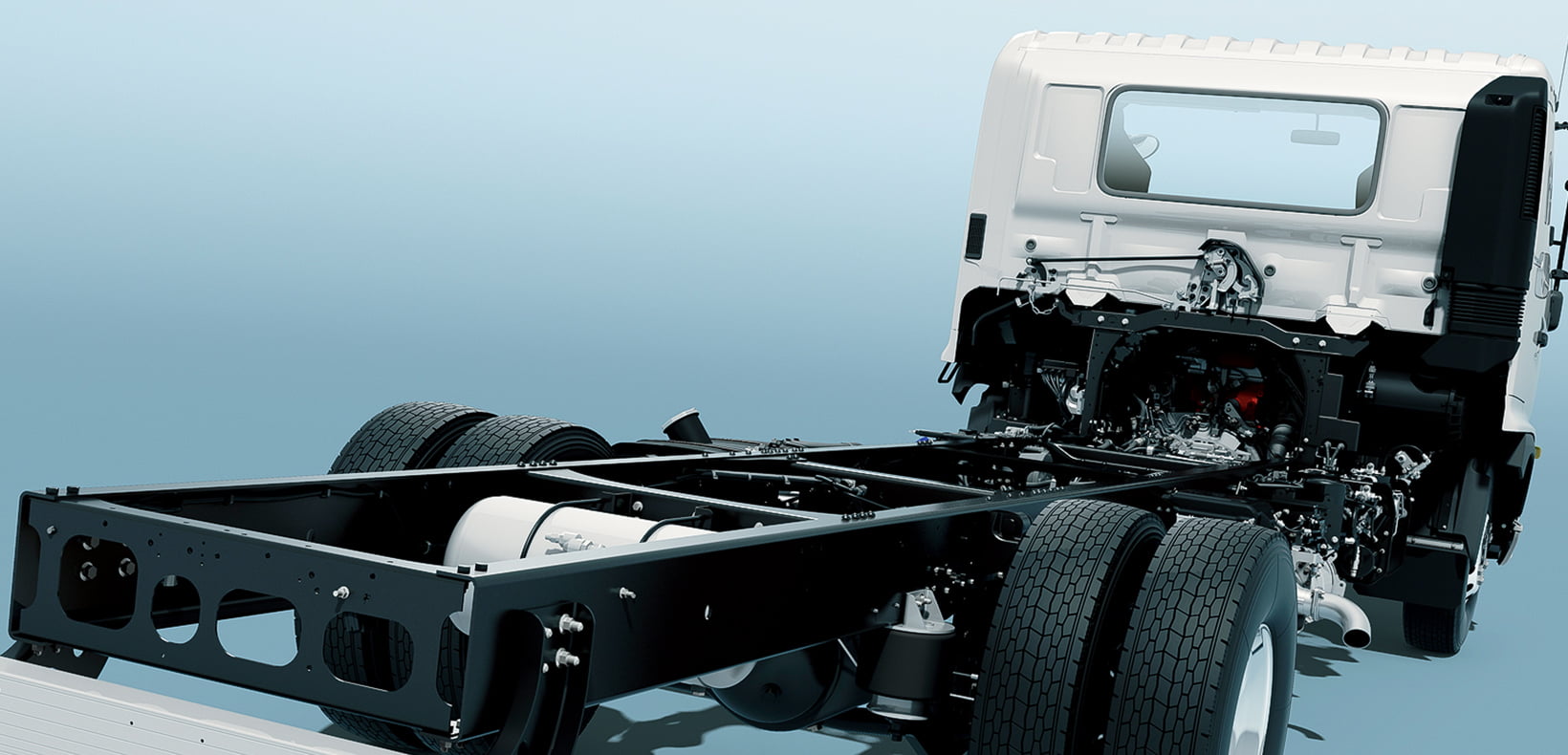- Home
- Products
- Diesel Engine Catalysts
- HC-SCR (hydrocarbon selective catalytic reduction) catalyst
HC-SCR(*)
(hydrocarbon selective catalytic reduction)
catalyst
The HC-SCR catalyst developed by Cataler does not use urea for nitrogen oxides (NOx) reduction, it does not need to install a urea solution tank on the vehicle. Therefore, it can contribute to space-saving of the vehicle. This system is especially beneficial for medium- to small-size trucks with limited loading space. *HC-SCR = Hydro Carbons Selective Catalytic Reduction

“A NOx purification catalyst that does not require urea
HC-SCR is a catalyst system for diesel vehicles that detoxifies nitrogen oxides (NOx) by using hydrocarbons (HC) produced by decomposition of fuel as a reducing agent. Since it is not necessary to replenish aqueous urea solution or install a urea tank, it contributes to higher convenience and space-saving.
Urea SCR system

HC-SCR system

Trends in emission regulations for heavy-duty diesel vehicles
Laws regulating substances emitted by automobiles that are harmful to the "environment" and "human body" are becoming stricter year-by-year all over the world. Nitrogen oxides (NOx) emitted from diesel engines react with ultraviolet rays in the atmosphere to form photochemical smog, which has bad effects for the human body, causes acid rain, and is harmful to the environment, so the regulation values are particularly severe.
NOx Regulation Trends for Diesel Heavy Vehicles in Japan
Characteristics of diesel engines
Diesel engines are widely used in both commercial and passenger vehicles due to their lower carbon dioxide (CO2) emissions and higher energy efficiency than gasoline engines. However, combustion at high temperature and high pressure generates a large amount of nitrogen oxides (NOx). Because diesel engines burn with more air condition (lean state) than the stoichiometric air-fuel ratio (*), there are fewer hydrocarbons (HC) and carbon monoxide (CO) necessary for the reduction reaction. Therefor the reduction of nitrogen oxidees (NOx) to nitrogen (N2) is very difficult.
(*)Regarding the stoichiometric air-fuel ratio
The ratio at which fuel and air react without excess or deficiency is called the stoichiometric air-fuel ratio.
Rich: A stoichiometric air-fuel ratio of less than 14.7 (more fuel)
Lean: A stoichiometric air-fuel ratio of more than 14.7 (more air)
Gasoline engines can be intentionally controlled to approach the stoichiometric air-fuel ratio, but diesel engines are usually "lean-burn" because of their mechanism of spontaneous fuel ignition (auto-ignition) using the temperature rise of compressed air in the cylinders.

Purification of NOx emissions from diesel engines
Nitrogen oxides (NOx) emitted from diesel engines are purified by adding reducing agents. In general, urea SCR (*) systems that use urea solution as a reducing agent are widely used. In the urea SCR system, urea solution is injected into the exhaust gas, and ammonia (NH3) formed by hydrolysis reaction with nitrogen compounds (NOx) to reduce them to harmless nitrogen (N2) and water (H2O).
Urea SCR system

(*)SCR
SCR stands for “Selective Catalytic Reduction”.
Problems with urea SCR
Since urea-SCR systems require users to refill aqueous urea solution regularly, the regions and car models in which they are used are limited, and the development of infrastructure for the refilling has been cited as an issue. Unlike heavy-duty trucks, light- to medium-duty trucks are predominantly confined to a small area and must travel to refill if there is no aqueous urea solution infrastructure in the vicinity. In emerging countries, the number of vehicles is rapidly increasing due to rapid development, and the aqueous urea solution infrastructure is not keeping pace. Moreover, there is also the problem of space for installing an aqueous urea solution tank on the vehicle.

Diesel vehicle that does not require aqueous urea solution
Features of after-treatment system “HC-SCR”
The HC-SCR system uses hydrocarbons (HC) decomposed from fuel as a reducing agent. Therefor it is not necessaly urea solution refill and tank space. For this reason, it is a system with great merits, especially for medium-sized to light-duty trucks.
HC-SCR system

NOx emissions of HC-SCR system
Cataler has developed a high-performance HC-SCR catalyst that can purify nitrogen oxides (NOx) over a wide temperature range by original development for the active material M.
This catalyst is used in Hino Motors' medium- and light-duty trucks that comply with Japan's 2016 Emission Regulations (JP16), which is the emission regulation for heavy-duty diesel vehicles.

Active species

Active species
This catalyst is used in Hino Motors' medium- and light-duty trucks that comply with Japan's 2016 Emission Regulations (JP16), which is the emission regulation for heavy-duty diesel vehicles.
Provided by: Hino Motors

Awards
- 2020Hino Motors "Technology Development Excellence Award"
- 2018
The Nikkan Kogyo Shinbun/MONOZUKURI Nippon Conference
The Cho-MONOZUKURI Parts Grand Prize: Environment, Resources and Energy-Related Parts Award, “Technology Development Award” Catalyst Manufacturers Association, Japan "Technology Award" Hino Motors "Technology Development Excellence Award"


 JAPANESE
JAPANESE

 Select Language
Select Language English
English


